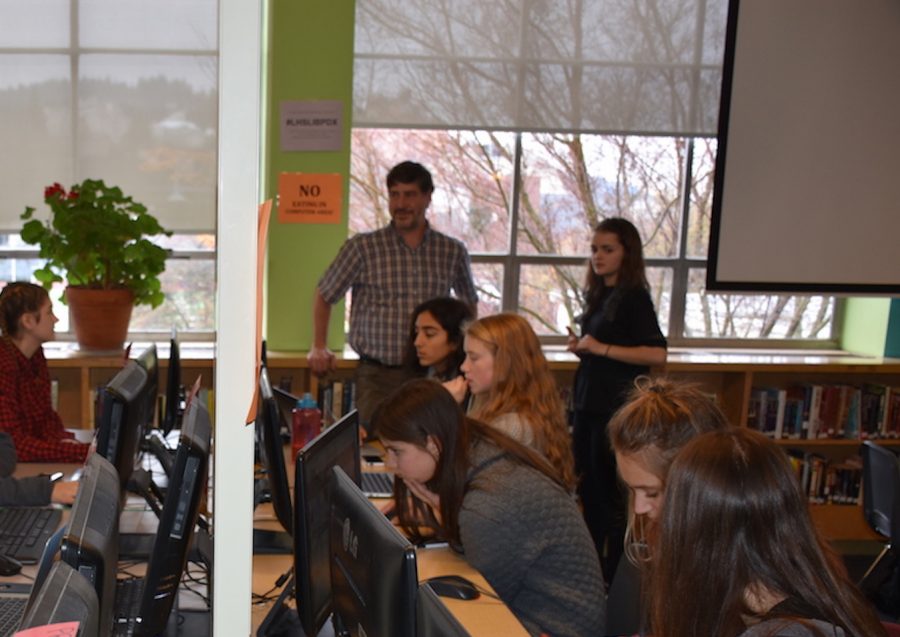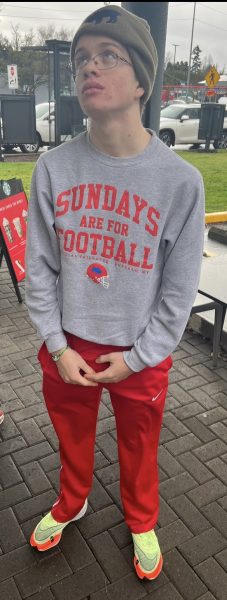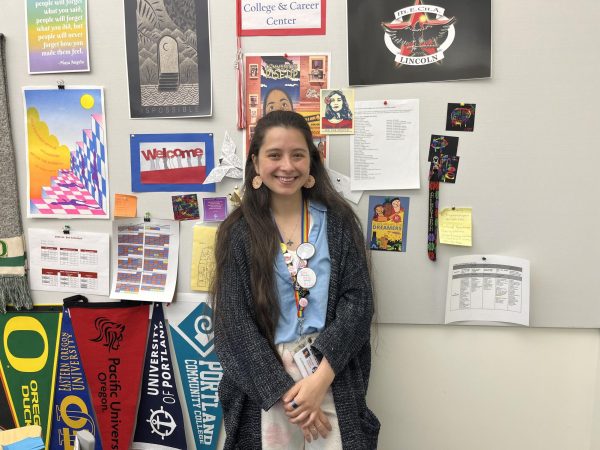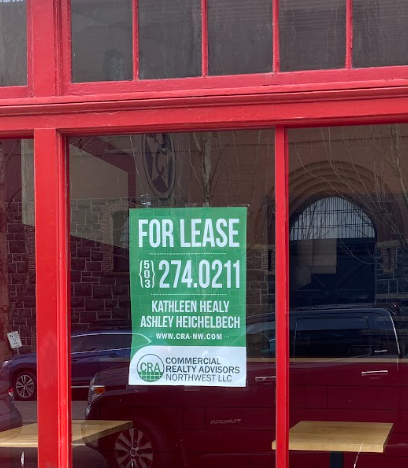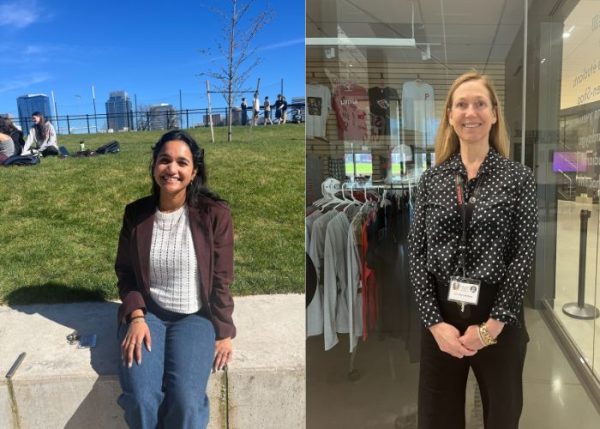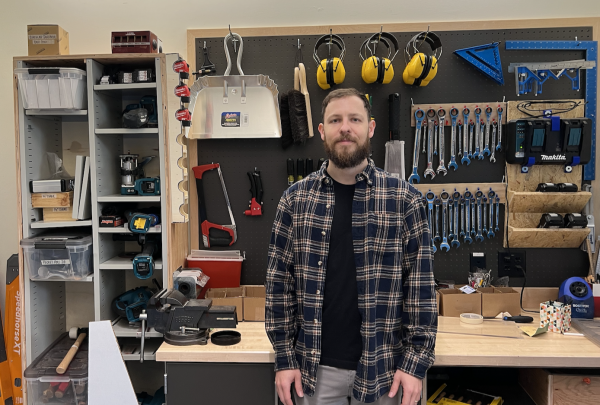Substitutes stepping in
On an average school day, there are eight substitute teachers at Lincoln. Their skill range is anywhere from recently graduated teachers to teachers who worked in other professions for decades and are now retired.
Matthew Plies and Mark Viebrock are among the substitute teachers commonly seen in Lincoln classrooms.
Plies says that his substitute teaching opportunity was “partly circumstance and partly by choice. When I starting applying for jobs in the Portland area in the late 1990s, there were very few social studies jobs. This was after the districts had been hit with post Measure 5 funding cuts for almost a decade.”
After Measure 5 passed in 1990 – capping school funding through property tax at $15 per $1,000 of real market value per year and gradually lowered to $5 per $1,000 per year – it was very difficult for many teachers to get jobs. But, Plies found a bright outcome in the midst of the rubble.
“The longer I didn’t get hired for full-time teaching and after I stopped taking middle school calls and getting more regular jobs at one school, Lincoln, I started really enjoying the subbing gig,” says Plies.
Plies also says that the substitute teaching program is always improving and he is “frequently pleased with how pedagogy has changed in recent years, at least for most of the teachers I sub for.”
Plies has also worked at Robert Gray Middle School, Westview High School, MLC, and half time at Lincoln in 2002-2003 and 2013-2014.
Viebrock, on the other hand, retired from PPS in 2008, ending a 30-year teaching career that started off with Special Education, and then moved to social studies.
In his career, he taught at Wilson, Cleveland, and Lincoln high schools. He also taught Special Education from Kindergarten to 12th grade, and social studies with 6th to 12th graders.
Viebrock worked for the 2010 census after retiring from teaching. Once that was over, “many of my teaching friends from Cleveland, which was the last school that I worked in, said that I should come back and substitute teach. ‘You’ll get lots of work and it will be familiar to you,’ [they said].”
He quickly found that he loved the substitute teaching style and that his teaching friends were right.
“I am lucky,” Viebrock says. “If you retire out of the district, and picked to be a substitute teacher, you only have to work when you want to. I have no minimum number of days out of the year that I [have] to work and [I decide] at what high schools I want to work at.”
Plies substitute teaches “about a third Social Studies, third Language Arts, and third other subjects.” He says that he enjoys the variety of teaching subjects, even when he knows very little about the class content.
Viebrock mainly teaches in social studies courses, including U.S. History and IB Psychology. He has a degree for teaching special education and has a international baccalaureate degree in social sciences.
Principal Peyton Chapman says substitutes play an important role at Lincoln and across the district.
“Because the skill set is so broad, it is very important to have a large pool of substitute teachers,” she said. “And you really do want Spanish-speaking teachers to teach Spanish, and you want a math teacher in a math classroom. And there are so many schools and absences, something like 500 absences the other day across PPS, so we usually we want to have a large number of subs, and enough subs to fill the different needs.”
Plies and Viebrock were both social studies teachers before their days of substitute teaching. Even though their reasons for substitute teaching are different, they both believe that “the relationships with students are the best part of teaching; as far as my preferences, planning and grading are not my favorite,” which fits perfectly with the role of a substitute.

